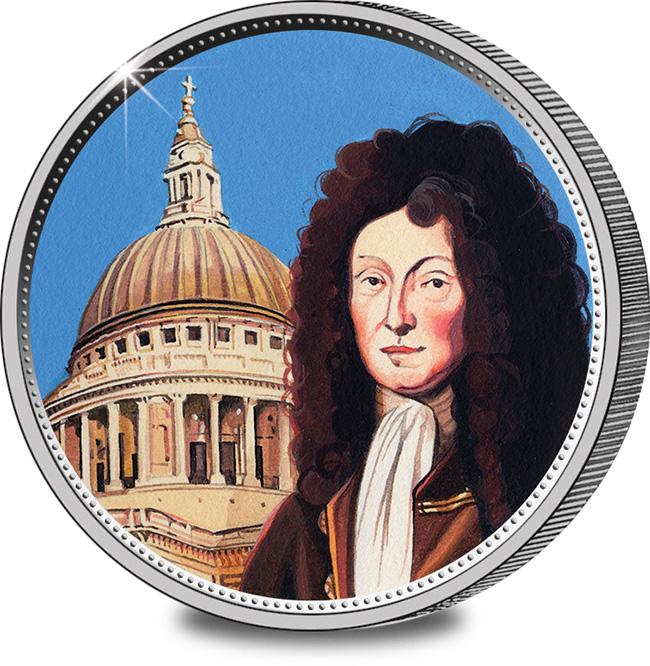
 |
Full name: Sir Christopher Wren
Born: 20th October 1632
Invention/Achievement: Redesigning and
rebuilding of London after the Great Fire of 1666
Date of
introduction/Achievement: 1669
Died: 25th February 1723
|
Inscribed in a circle of black marble on the main floor of St
Paul's Cathedral is an inscription in memory of the architect, Sir
Christopher Wren. In Latin, it ends: "LECTOR SI MONUMENTUM
REQUIRIS CIRCUMSPICE" ("Reader, if you seek his monument, look
around you"), And what a monument!
St Paul's Cathedral is the masterpiece of Sir Christopher Wren's
life work, but there are many other monuments to his genius, in
London and elsewhere.
Wren was born in 1632, the son of the rector of East Knoyle,
Wiltshire. Later he moved with his father, who had become
Dean of Windsor. He attended Westminster School, where he
showed talent for drawing, science and mathematics. He went
up to Wadham College Oxford, where he became part of a brilliant
group of students who later formed the nucleus of the Royal
Society.
In 1661 Wren became professor of astronomy at Oxford and in 1662
was a founder member of the Royal Society. His interest in
art, engineering and physics led him into architecture and he
prepared proposals for a new St Paul's Cathedral. Shortly
afterwards, the cathedral, together with much of the City of
London, burned down in the great fire of 1666.
Wren's ambitious plans were rejected due to opposition from land
owners, yet Wren was to be responsible for the design and
construction of more than 50 churches in the City.
On 30th July 1669 he was officially appointed to
design a replacement for the old St Paul's Cathedral. The
design took Wren several years and the building many more.
The Cathedral was consecrated for use on 2nd
December 1697, with the "topping out" (that is, the laying of the
final stone in the Lantern) being completed on 26th
October 1708. It was declared officially complete by
Parliament on Christmas Day 1711, although further construction,
such as adding statues to the roof, continued into the 1720s.
Wren was responsible for many other notable buildings during his
lifetime, including the Royal Observatory at Greenwich, the Royal
Hospital in Chelsea, Trinity College Library at Cambridge
University and the façade of Hampton Court Palace. He died in
1723, from a chill caught on a visit to St Paul's.